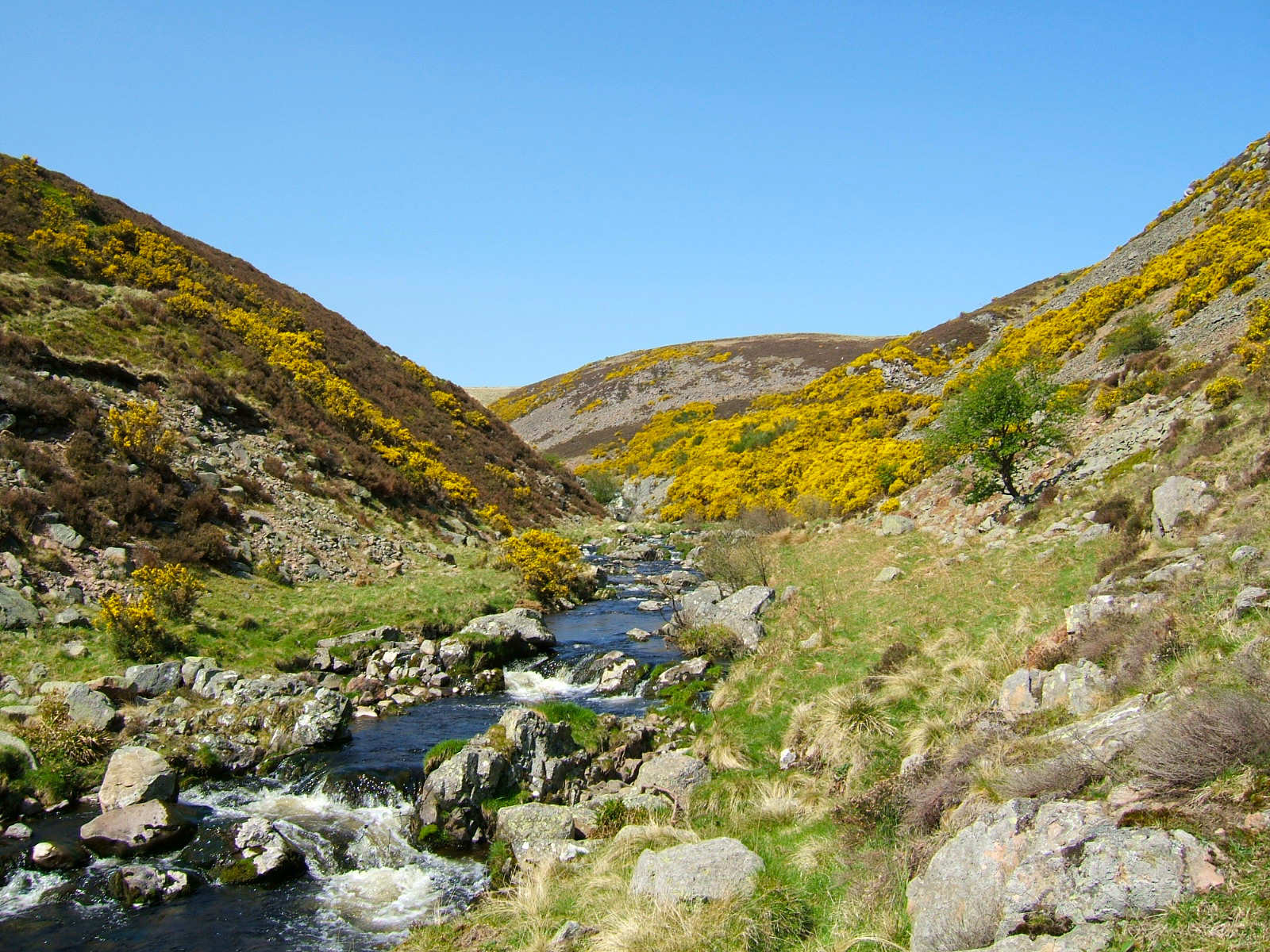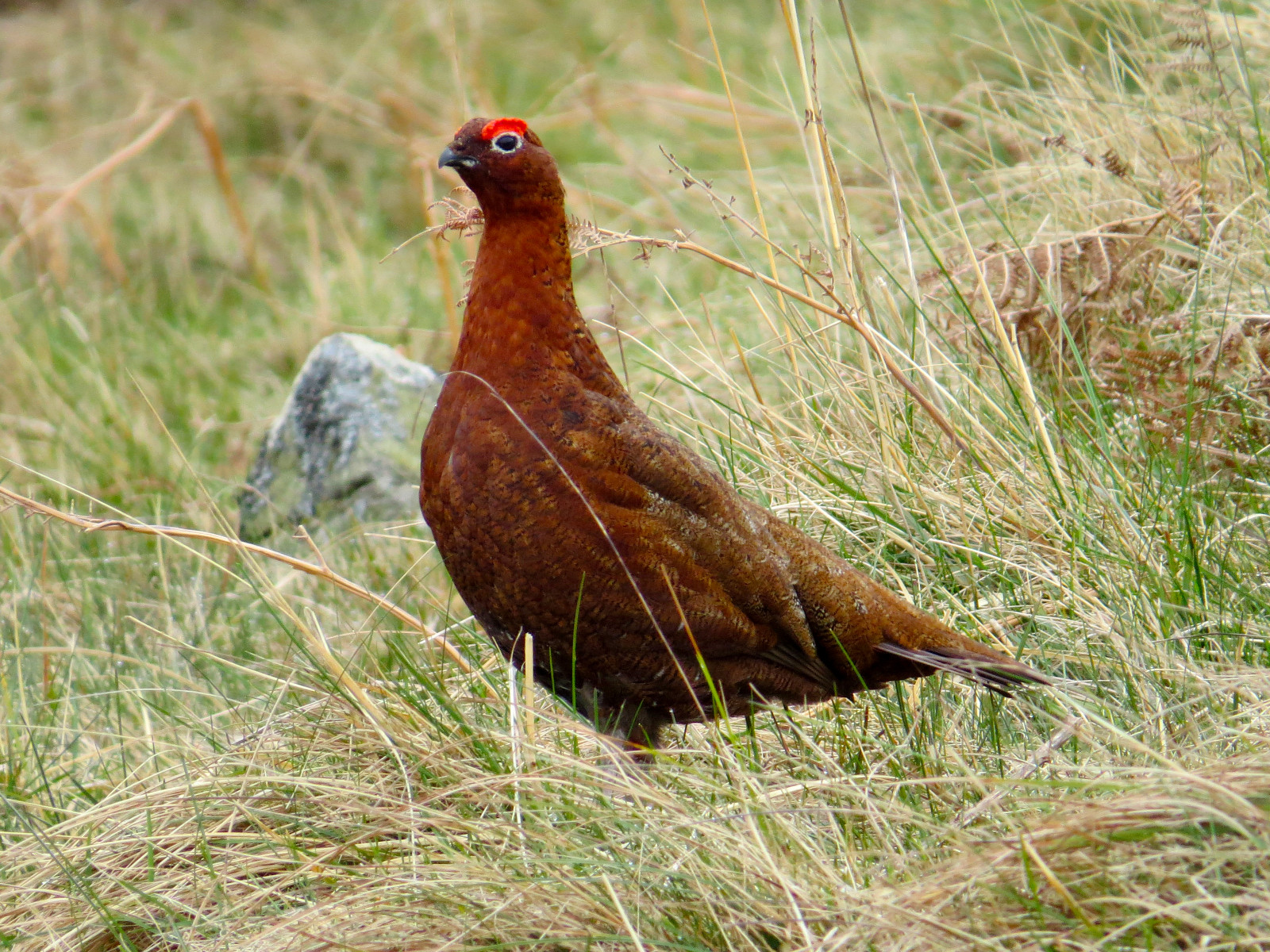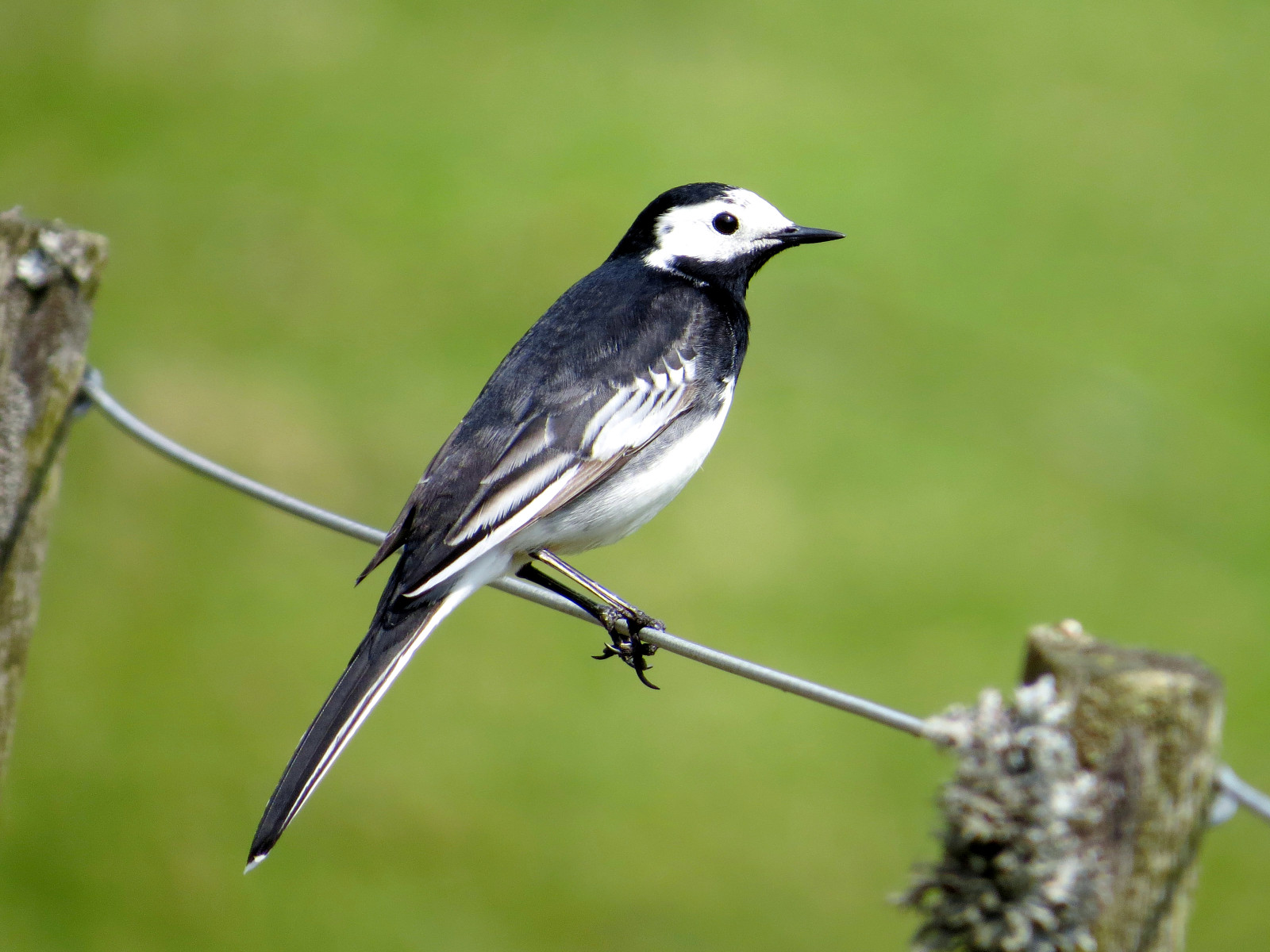Descrizione
The Harthope is one of Northumberland's best upland valleys, with a mix of semi-natural Alder-Oak-Birch-Hazel woodland, Hawthorn scrub, sheep-grazed grass, and higher up, heather moors and some rocky crags and scree. The highest ground, on The Cheviot (815 m), is topped with blanket Sphagnum bog. If you are very lucky, the strenuous climb to the top may be rewarded with Piviere tortolino on migration in May or September.
In the higher, steeper parts of the valley, Merlo dal collare breed, together with Culbianco. Large numbers of Pispola (the commonest bird here!) and Allodola breed on the more open grassy slopes. The heather moors have large populations of Pernice bianca nordica, sadly now managed for shooting; shooters also release large numbers of Pernice rossa and Fagiano comune every year, likely with major detrimental effects on native ground-nesting birds. The lower slopes and woods hold Picchio verde and Cuculo, and Saltimpalo is a recent colonist with milder winters allowing their survival. Warblers include Luì grosso, Luì piccolo, Beccafico, Capinera and Sterpazzola. Few waders are present, but Beccaccia are resident in small numbers and Beccaccia di mare and Piro piro piccolo breed along the Harthope Burn; there are also good numbers of Merlo acquaiolo and Ballerina gialla on the burn.
Sadly, the site has not escaped the general declines in so many species; several have disappeared or become very scarce in recent years. Prispolone, Balia nera, Cincia bigia and Luì verde have all been lost or become hard to find, and even Codirosso and Stiaccino are much harder to find than just a few years ago. Raptors too have also become less easy to find, with just a few Poiana and the odd Corvo imperiale, while Albanella reale and Falco pellegrino have largely disappeared, probably due to illegal persecution related to the grouse shooting.
Like most upland sites, the area is bleak in winter, though deep snow seems to be largely a thing of the past. Despite this, good numbers of Tordo sassello and Cesena can be found, and the Birch and Alder woods attract Organetto minore and Lucherino additional to the resident breeding numbers.
Dettagli
Accesso
Unfortunately, only accessible by car; no public transport nearby. Steep slopes on the road in make the site difficult for cyclists. Click on a P in the map for directions.
Terreno e habitat
Foresta , Montagna , Canyon/scogliera , Alberi e cespugli sparsi , Prateria/pascolo , Altopiano , Valle , Brughiere/lande , FiumeCaratteristiche dell’area
Montagnoso , Terreno piano , Paludoso , Collinoso , Roccioso , Paesaggio apertoPercorso ad anello
NoÈ utile un cannocchiale?
Può essere utileBuona stagione per il BW
Primavera , EstateMiglior periodo per visitare
PrimaveraPercorso
Strada asfaltata , Sentiero ampio , Strada sterrata , Sentiero strettoGrado di difficoltà del percorso a piedi
FaticosoModalità di accesso
A piedi , MacchinaCapanno/torretta di osservazione
NoInformazioni aggiuntive
This is one of the best places in Northumberland to see Adders (Vipera berus), Britain's only venomous snake, though they are not easy to find. Cool but sunny days in spring offer the best chances, when they come out into the open to bask in the sun. For their (and your own!) safety, do not touch them. Other 'non-birds' to look for include Common Toad, Roe Deer and Brown Hare.


